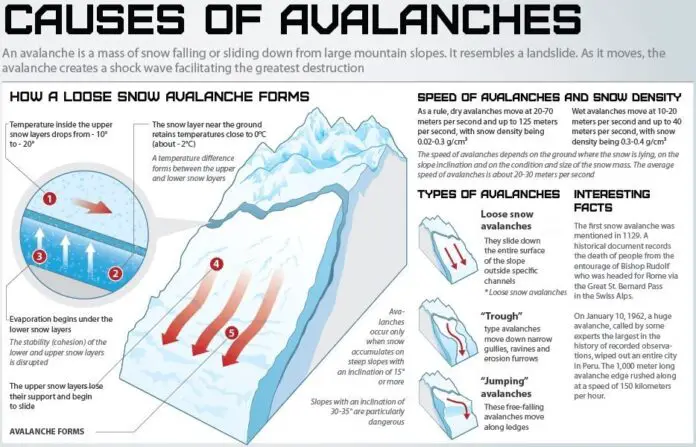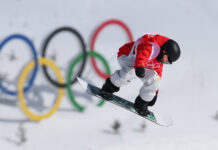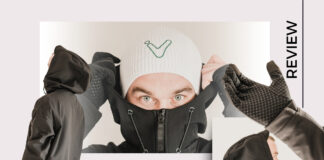
Avalanches are obviously dangerous and unpredictable. That is why, as part of avalanche awareness, one must know what causes an avalanche in order to prepare oneself when faced with this situation. An avalanche can be due to one or more factors. In this section, get familiar with the different factors that can cause an avalanche:
Weather
The weather might be the biggest factor that can cause an avalanche. It plays a huge role in the development of snow on the ground. One must consider the weather days before the scheduled trip so as to know if it is safe to continue or not. Moreover, rapid change in weather can have bad effects on snow for snowpacks do not adapt easily to rapid changes.
Snowpack
The snowpack is not what you think it may seem on the surface. It may appear as a thin cover, but if you look at the cross-section of it, you may see several layers of snow that had developed through time. Snow builds up over the season, and during winter, a thicker layer is added to the previous one. Also, bonds between layers may be strong or weak. Avalanches occur if the bond is weak. Even if you have a strong bond in the upper layers of the snowpack, an avalanche may happen if the layers beneath it are weak.
Terrain
Snow builds up on slopes. If the slope is too steep, one can expect an avalanche to happen. Avalanches develop on slopes between 25- 55� and it starts on slopes between the 35�- 45� range. This is quite steep since the ideal angle for slopes so as not to develop an avalanche is 38�. This is the angle of repose � the steepest angle a granular substance can maintain without collapsing under the pull of gravity. And since snow is a granular substance, its target angle is 38�.
On low-angled slopes, snow can start moving only if it is heavily loaded. But on steep slopes, the snow does not form slabs. Instead, it slides down continuously. Though slopes should be steep in order to start an avalanche, that does not necessarily mean that slopes with low angles are completely safe. Of course, it still depends on many conditions such as temperature and weather. Even a shallow snowpack on a safe slope can still trigger an avalanche. If it is springtime when snowpack carries free water around the snow grain, the avalanche will behave more like water and it will slide down even on low terrain.
One can measure the slope angle with an inclinometer, or eyeball it by dangling a Ski Pole by the strap and estimating the angle. One must also keep in mind that a slope may vary in steepness and may require different techniques to be able to trek it safely.
One must remember that avalanche is not solely caused by one factor. There would be times that all three factors are present. Knowing these factors can help a person be more observant of his surroundings and think twice before having fun in the snow.



















